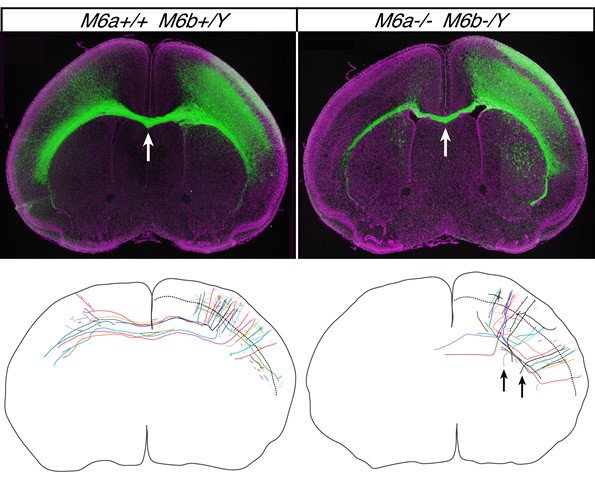Axon elongation and guidance supported by M6 membrane proteins
Division of Brain Function • Hirata Group
Transcallosal Projections Require Glycoprotein M6-Dependent Neurite Growth and Guidance.
Sakura Mita, Patricia de Monasterio-Schrader, Ursula Fünfschilling, Takahiko Kawasaki, Hidenobu Mizuno, Takuji Iwasato, Klaus-Armin Nave, Hauke B. Werner, and Tatsumi Hirata. Cerebral Cortex DOI: 10.1093/cercor/bhu129Four-transmenbrane protein family M6 is concentrated on axon tips. Although in vitro studies have suggested its involvement in axon elongation, in vivo evidence has been lacking. In this study, we made double knockout mice for two family members M6a and M6b, and showed that these membrane proteins in fact control axon elongation in vivo. In the M6a/M6b double knockout brain, the corpus callosum, a long axon commissure that connects left-right brain hemispheres, was severely hypoplastic; many axons were found to stop short of reaching the midline. Furthermore, a fraction of callosal axons were misrouted subcortically. These results show that M6 proteins are indeed important regulators of axon growth and guidance in the developing brain.
Superenova system developed by the Division of Neurogenetics is used in this study.

Top: the bundle of callosal axons (green) connecting brain hemispheres (arrow) is thinner in the M6a/M6b double mutant brain (right). Bottom: callosal axon trajectories traced with Supernova system. In the double mutant brain (right), the axons are not simply shorter but also disorganized, and some are even misdirected subcortically (arrows).















